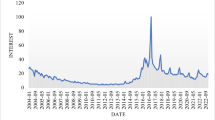Abstract
Augmented reality is widely used technology in current years in different field of education to enhance the learning process. This study reflects a new way to learn Bengali letters and digits for the early age primary school going children using AR technology. Nowadays, smart phones are very much available in Bangladesh from the rural area to urban area. The proposed method helps to observe interactive 3D view of the characters using mobile camera-based AR application having different options to learn how to write the target image character, the pronunciations process and the word making using the target letter. The target images was taken from the book pages provided by national curriculum and textbook board of Bangladesh to ensure the physical book available. This study focused on help the children in learning the Bengali letters and digits in more interactive, realistic and interesting way rather than the traditional manner. The process designed depending on marker-based AR technology which is feasibly strong for the early childhood education. Usability test results present in later portion. According to the survey, the major findings of the study that the teachers thinks the study reflects a positive way of making the learning process more engaging and as reported by assessment student performance increased using proposed AR method.








Similar content being viewed by others
References
Kuang Y, Bai X. The feasibility study of augmented reality technology in early childhood education. In: 2019 14th international conference on computer science and education (ICCSE); 2019 Aug 19, IEEE. p. 172–175
Dünser A, Walker L, Horner H, Bentall D. Creating interactive physics education books with augmented reality. In: Proceedings of the 24th Australian computer–human interaction conference; 2012 Nov 26. p. 107–114.
Dünser A, Hornecker E. An observational study of children interacting with an augmented story book. In: Paper presented at the edutainment; 2007; CUHK, Hong Kong.
Cho J, Rahimpour S, Cutler A, Goodwin CR, Lad SP, Codd P. Enhancing reality: a systematic review of augmented reality in neuronavigation and education. World Neurosurg. 2020. https://doi.org/10.1016/j.wneu.2020.04.043.
Kaghat FZ, Azough A, Fakhour M, Meknassi M. A new audio augmented reality interaction and adaptation model for museum visits. Comput Electr Eng. 2020;1(84):106606.
Cranmer EE, tom Dieck MC, Fountoulaki P. Exploring the value of augmented reality for tourism. Tour Manag Perspect. 2020;35:100672. https://doi.org/10.1016/j.tmp.2020.100672.
Loureiro SMC, Guerreiro J, Ali F. 20 years of research on virtual reality and augmented reality in tourism context: A text-mining approach. Tour Manag. 2020;77:104028. https://doi.org/10.1016/j.tourman.2019.104028.
Nincarean D, Alia MB, Halim NDA, Rahman MHA. Mobile augmented reality: the potential for education. Procedia Soc Behav Sci. 2013;103:657–64. https://doi.org/10.1016/j.sbspro.2013.10.385.
Sahin D, Yilmaz RM. The effect of augmented reality technology on middle school students’ achievements and attitudes towards science education. Comput Educ. 2020;1(144):103710.
Iordache DD, Pribeanu C, DanielIordache AB, Pribeanu C, Balog A. Influence of specific AR capabilities on the learning effectiveness and efficiency. Stud Inform Control. 2012. https://doi.org/10.24846/v21i3y201201.
Oranç C, Küntay AC. Learning from the real and the virtual worlds: educational use of augmented reality in early childhood. Int J Child Comput Interact. 2019. https://doi.org/10.1016/j.ijcci.2019.06.002.
Yilmaz RM, Kucuk S, Goktas Y. Are augmented reality picture books magic or real for preschool children aged five to six? Br J Edu Technol. 2017;48(3):824–41.
Tomi AB, Rambli DR. An interactive mobile augmented reality magical playbook: learning number with the thirsty crow. Procedia Comput Sci. 2013;1(25):123–30.
Azuma R. A survey of augmented reality. Presence Teleoperators Virtual Environ. 1997;6(4):355–85.
Flavián C, Ibáñez-Sánchez S, Orús C. The impact of virtual, augmented and mixed reality technologies on the customer experience. J Bus Res. 2019;1(100):547–60.
Feiner S, MacIntyre B, Seligmann D. Knowledge based augmented reality. CACM. 1993;36(7):53–61. https://doi.org/10.1145/159544.159587.
Rauschnabel PA, Felix R, Hinsch C. Augmented reality marketing: how mobile AR-apps can improve brands through inspiration. J Retail Consum Serv. 2019;49:43–53. https://doi.org/10.1016/j.jretconser.2019.03.004.
Rauschnabel PA, Rossmann A, Dieck MC. An adoption framework for mobile augmented reality games: the case of Pokémon Go. Comput Hum Behav. 2017;76:276–86. https://doi.org/10.1016/j.chb.2017.07.030.
Motahar T, Das R, Fatema T, Bornomala AR. Bengali learning experience using augmented reality. In: MobileHCI 18: proceedings of the 20th international conference on human–computer interaction with mobile devices and services adjunct. doi:https://doi.org/10.1145/3236112.3236138.
Rohaya D, Rambli A, Matcha W, Sulaiman S, Nayan MY. Design and development of an interactive augmented reality edutainment storybook for preschool. IERI Procedia. 2012;2:802–7 (ISSN 2212-6678).
Billinghurst M, Kato H, Poupyrev I. The magicbook: a transitional AR interface. Comput Graph. 2001;25(5):745–53.
Martín S, Díaz G, Cáceres M, Gago D, Gibert M. A mobile augmented reality gymkhana for improving technological skills and history learning: outcomes and some determining factors. In: E-learn: World conference on e-learning in corporate, government, healthcare, and higher education; 2012 Oct 9; Association for the advancement of computing in education (AACE). p. 260–265
Juan MC, Furió D, Alem L, Ashworth P, Cano J. ARGreenet and basic-greenet: two mobile games for learning how to recycle. In: Proceedings of the 19th international conference on computer graphics, visualization and computer vision; 2011. p. 25–32.
Tarng W, Ou KL. A study of campus butterfly ecology learning system based on augmented reality and mobile learning. In: 2012 IEEE seventh international conference on wireless, mobile and ubiquitous technology in education; 2012 Mar 27; IEEE. p. 62–66.
Neumann U, You S. Natural feature tracking for augmented reality. IEEE Trans Multimed. 1999;1(1):53–64.
Author information
Authors and Affiliations
Corresponding author
Ethics declarations
Conflict of interest
The authors declare that they have no conflict of interest.
Additional information
Publisher's Note
Springer Nature remains neutral with regard to jurisdictional claims in published maps and institutional affiliations.
Rights and permissions
About this article
Cite this article
Hossain, M.J., Ahmed, T. Augmented Reality-Based Elementary Level Education for Bengali Character Familiarization. SN COMPUT. SCI. 2, 31 (2021). https://doi.org/10.1007/s42979-020-00402-w
Received:
Accepted:
Published:
DOI: https://doi.org/10.1007/s42979-020-00402-w




